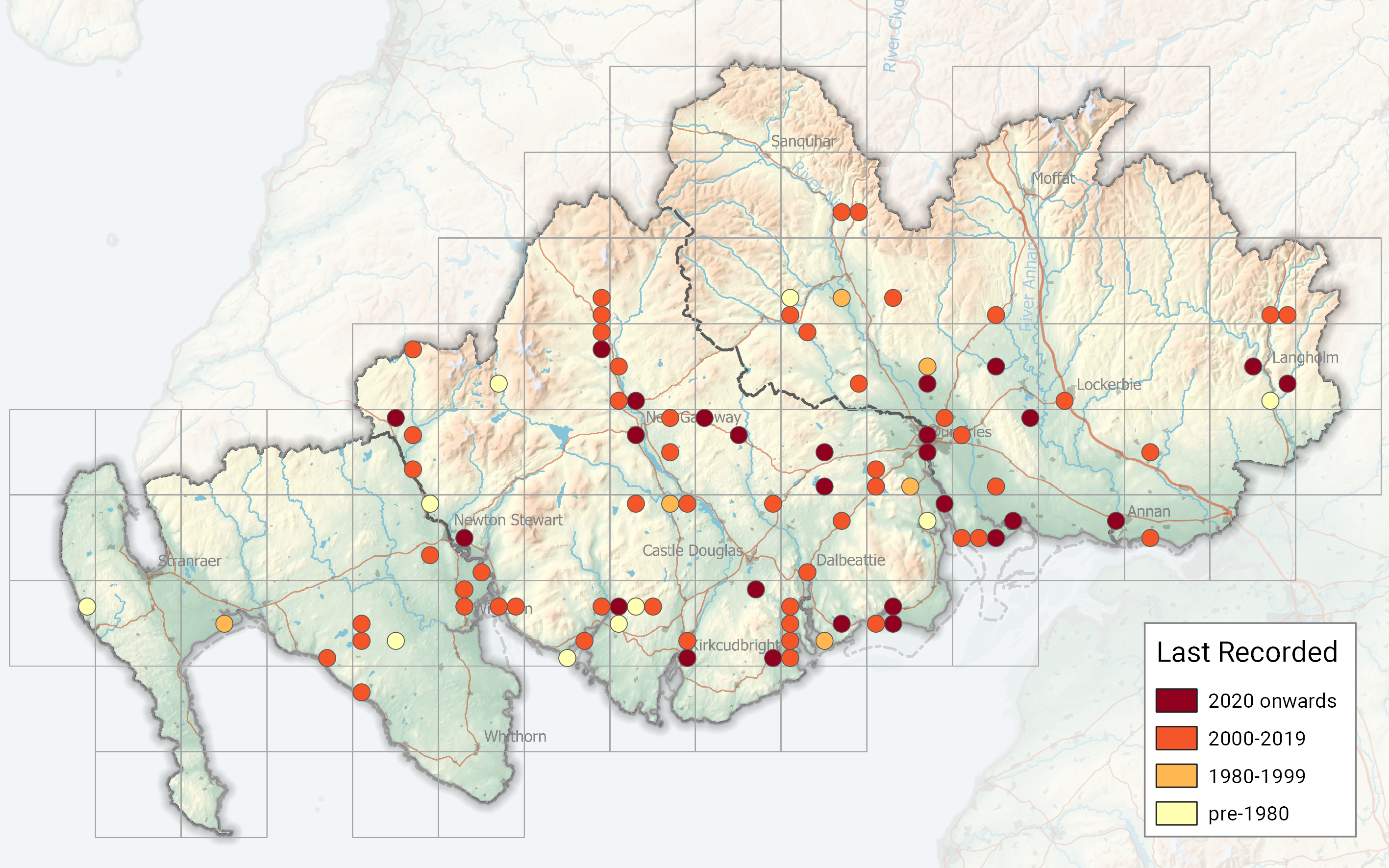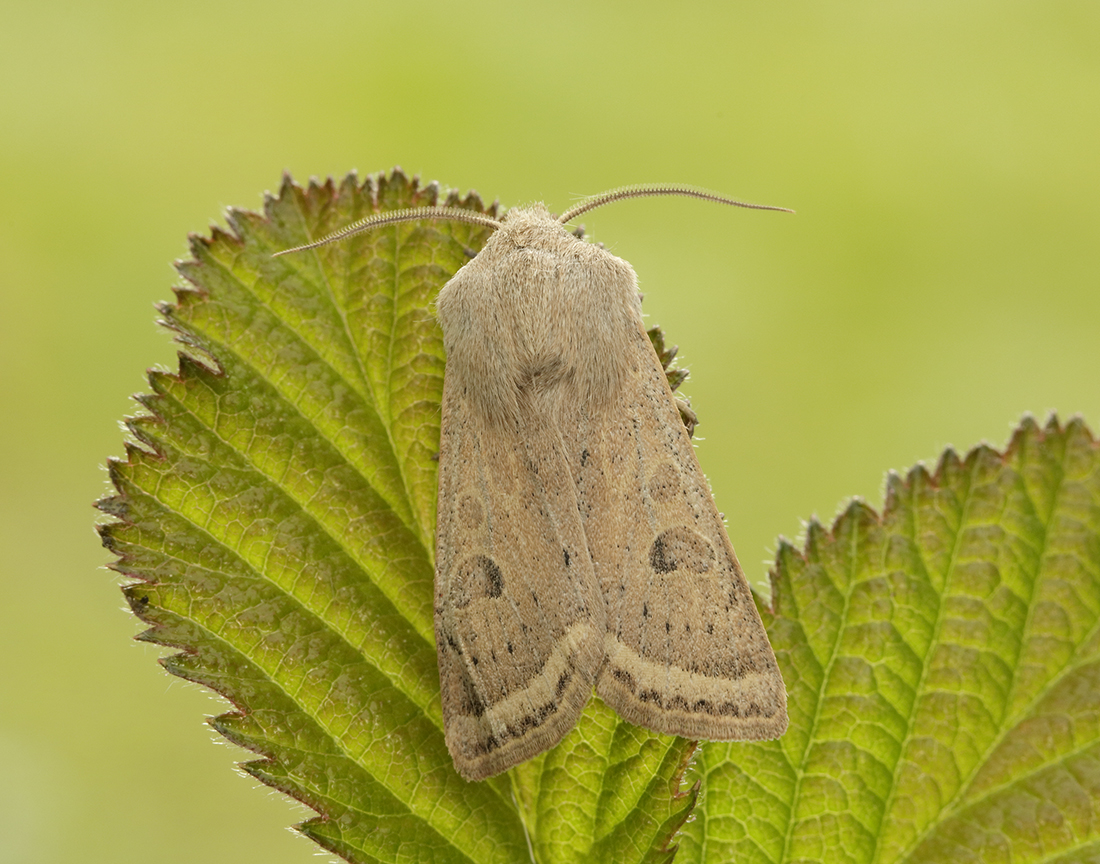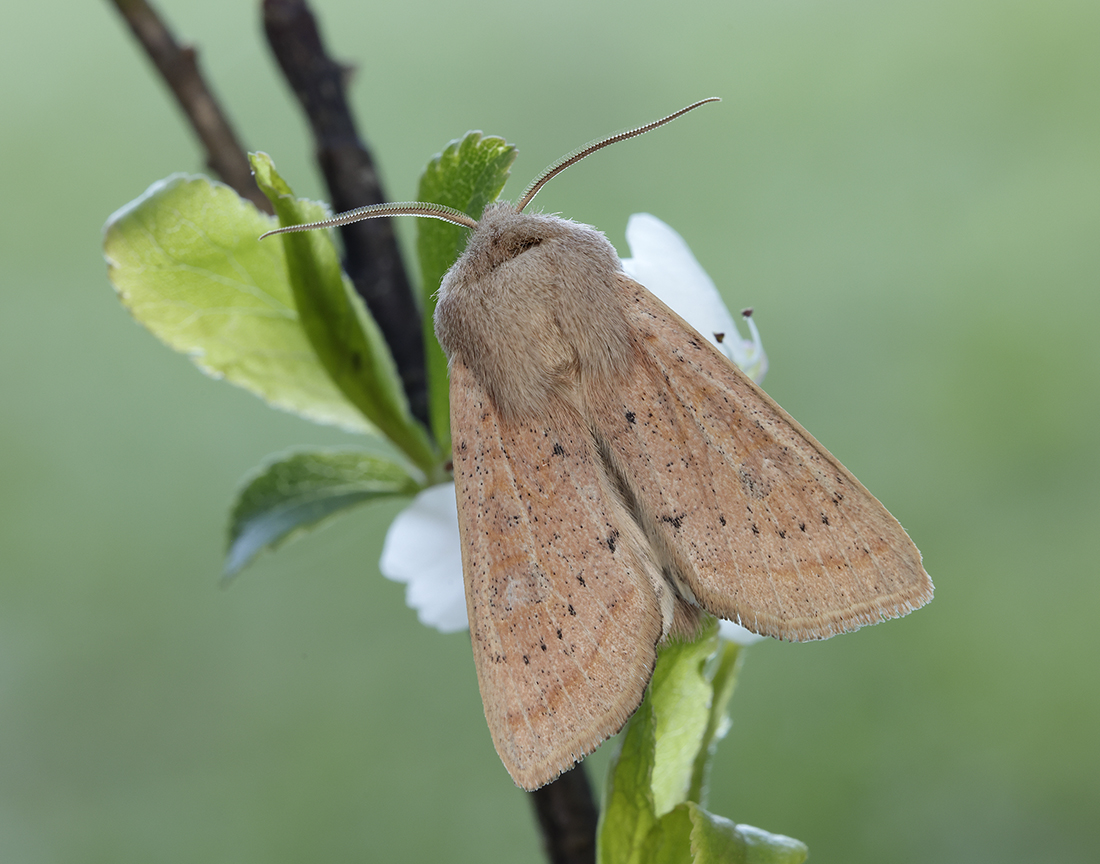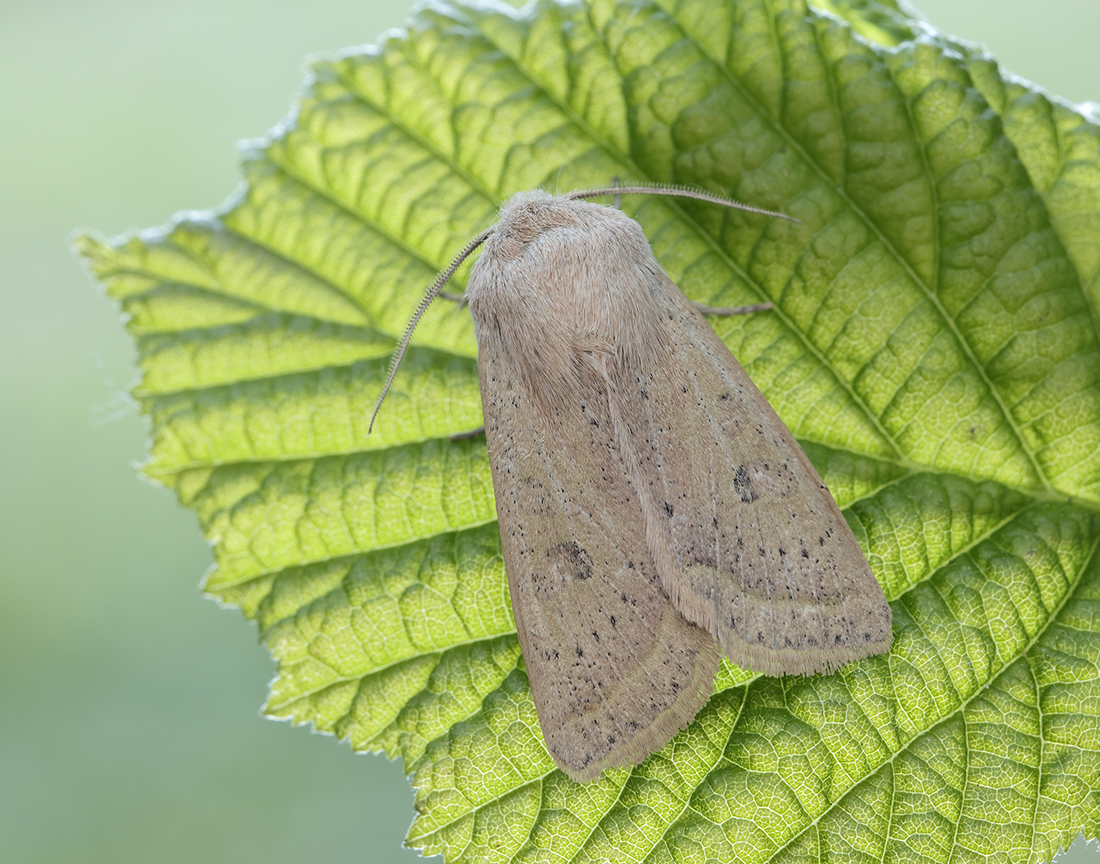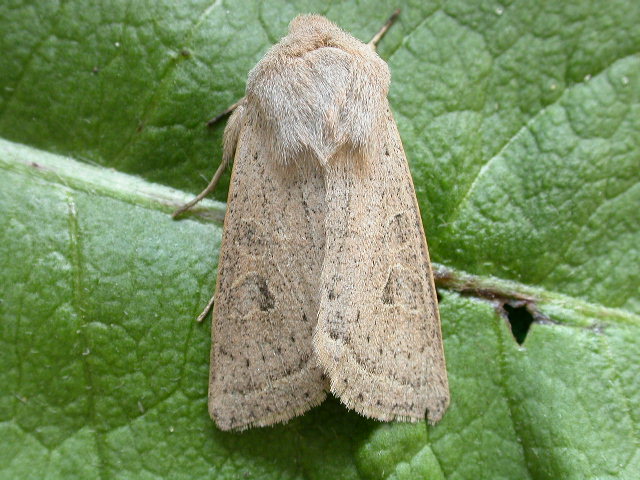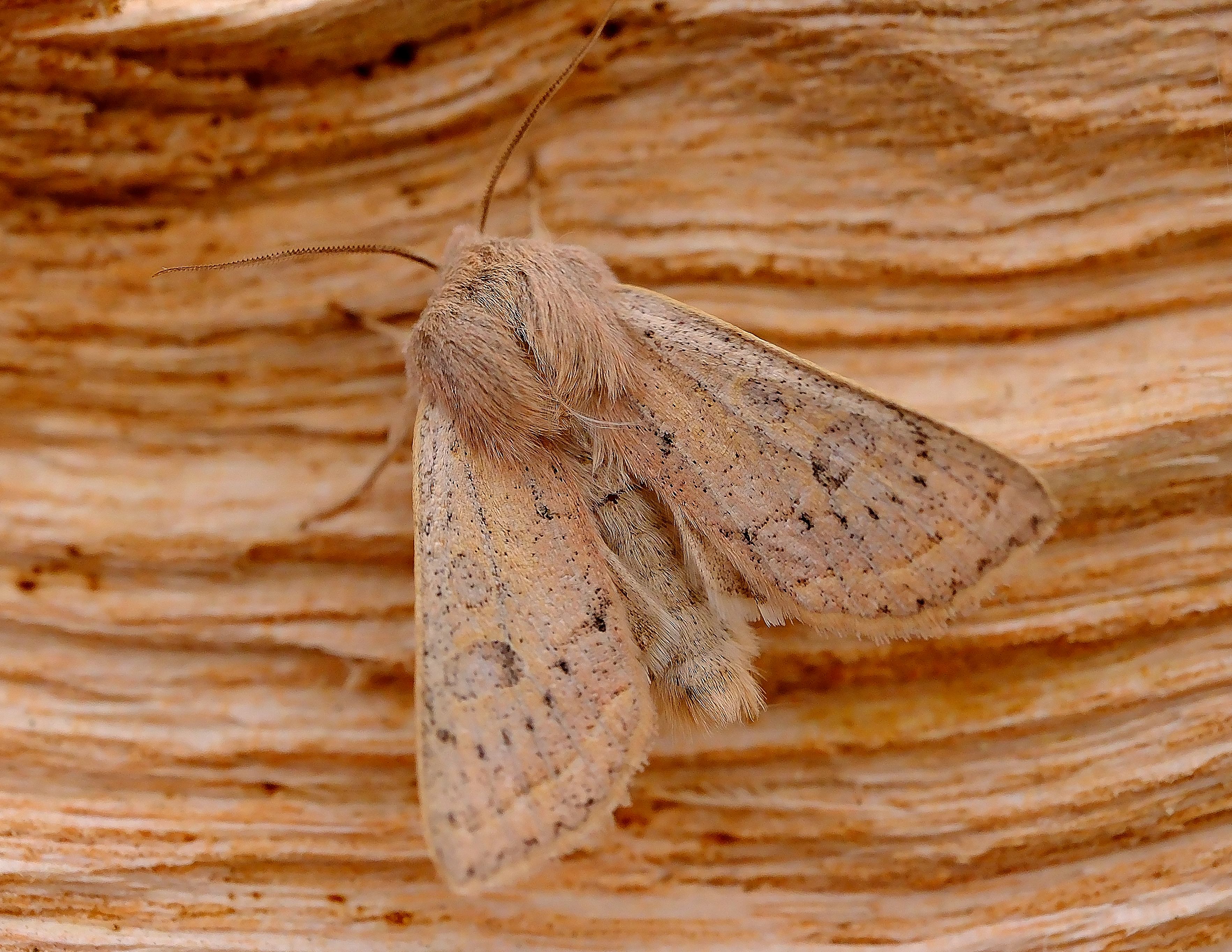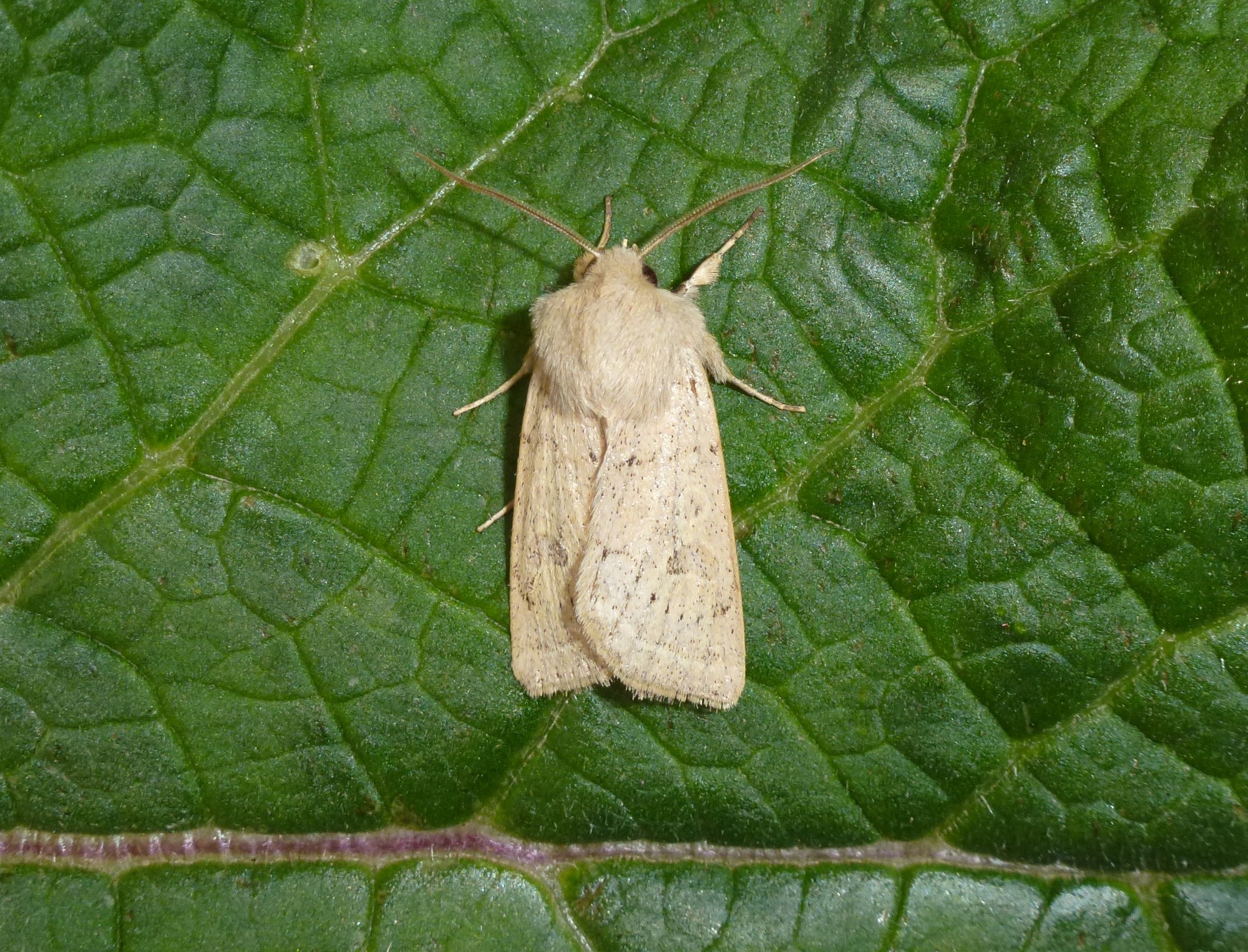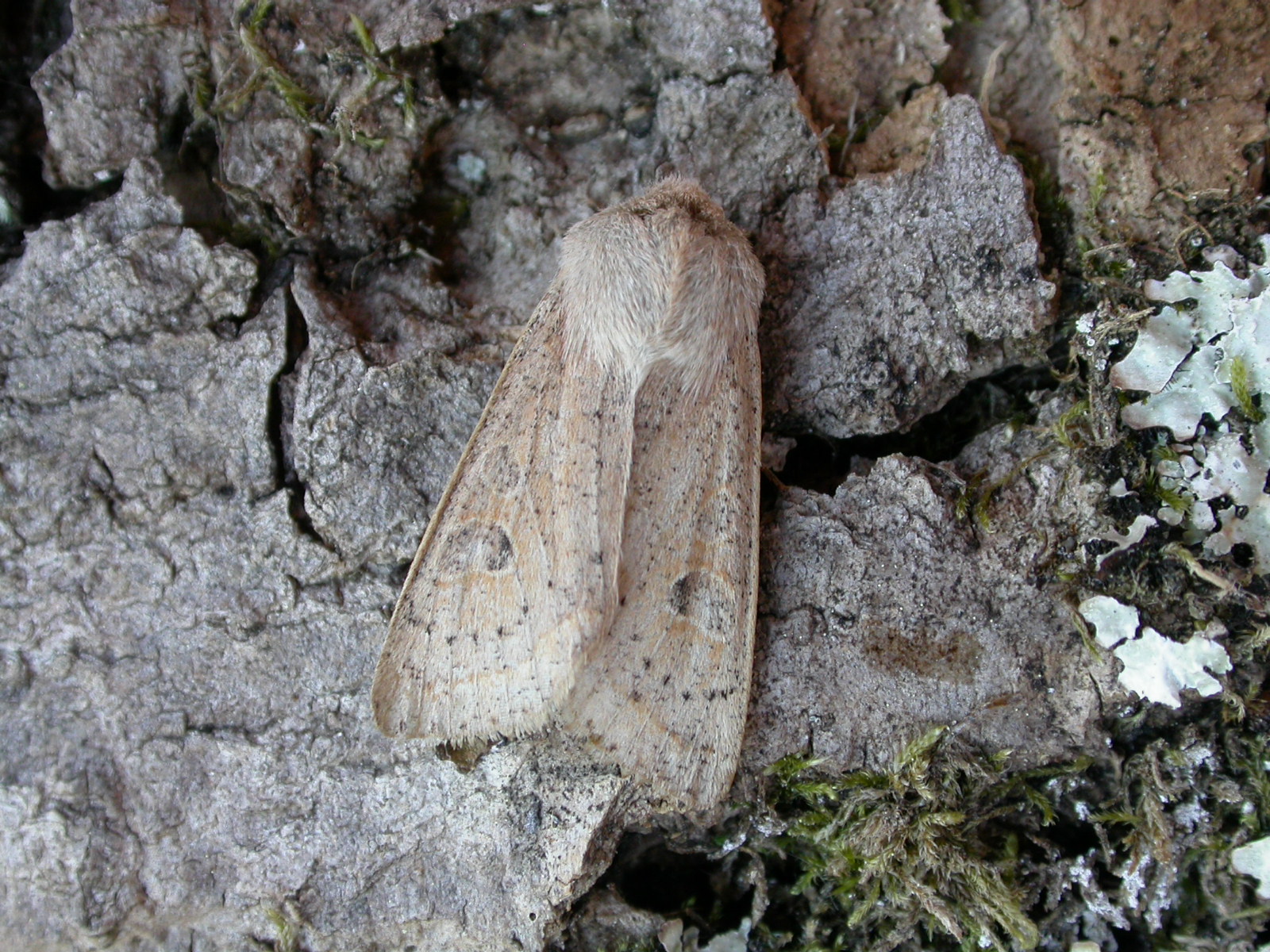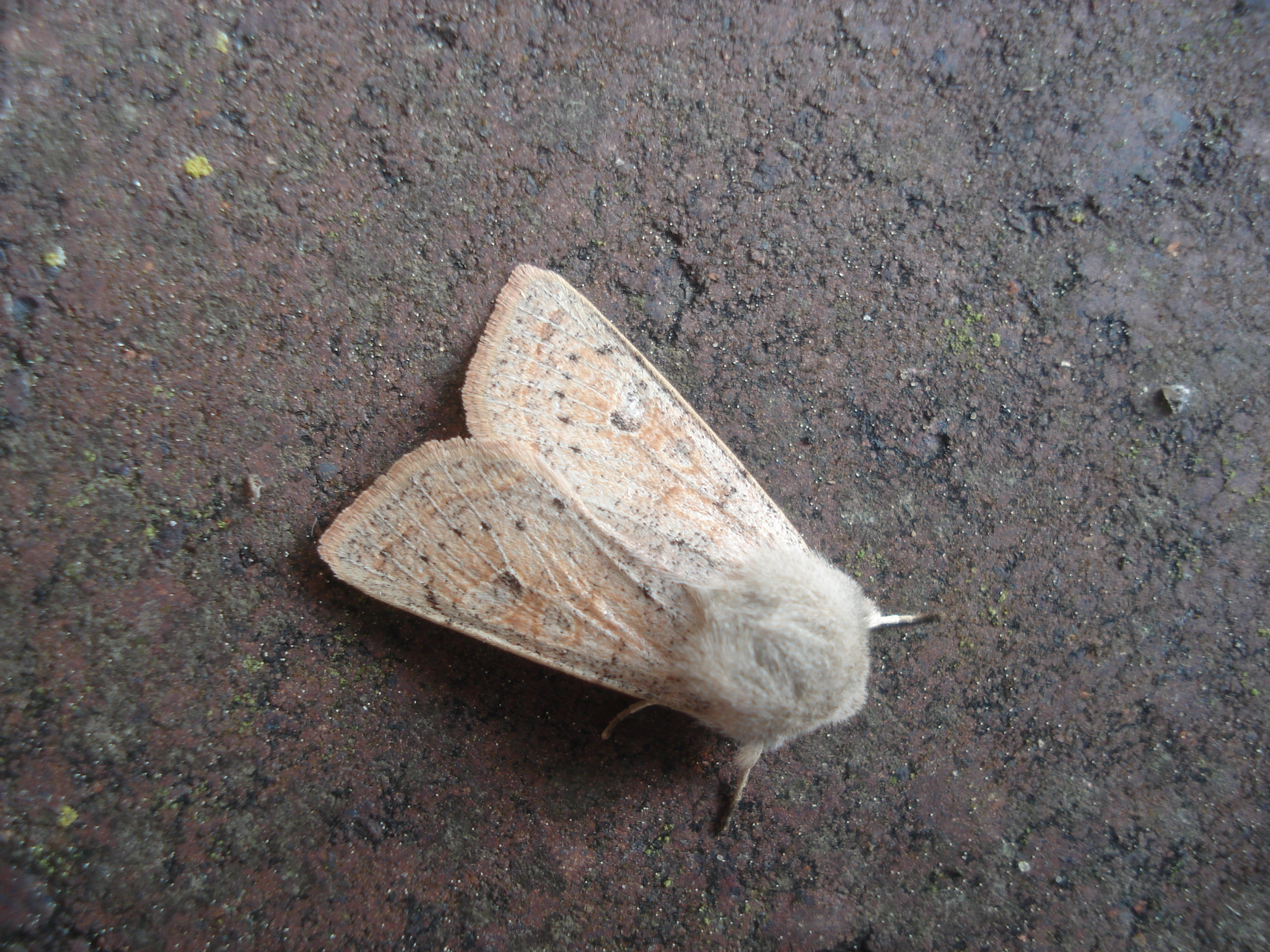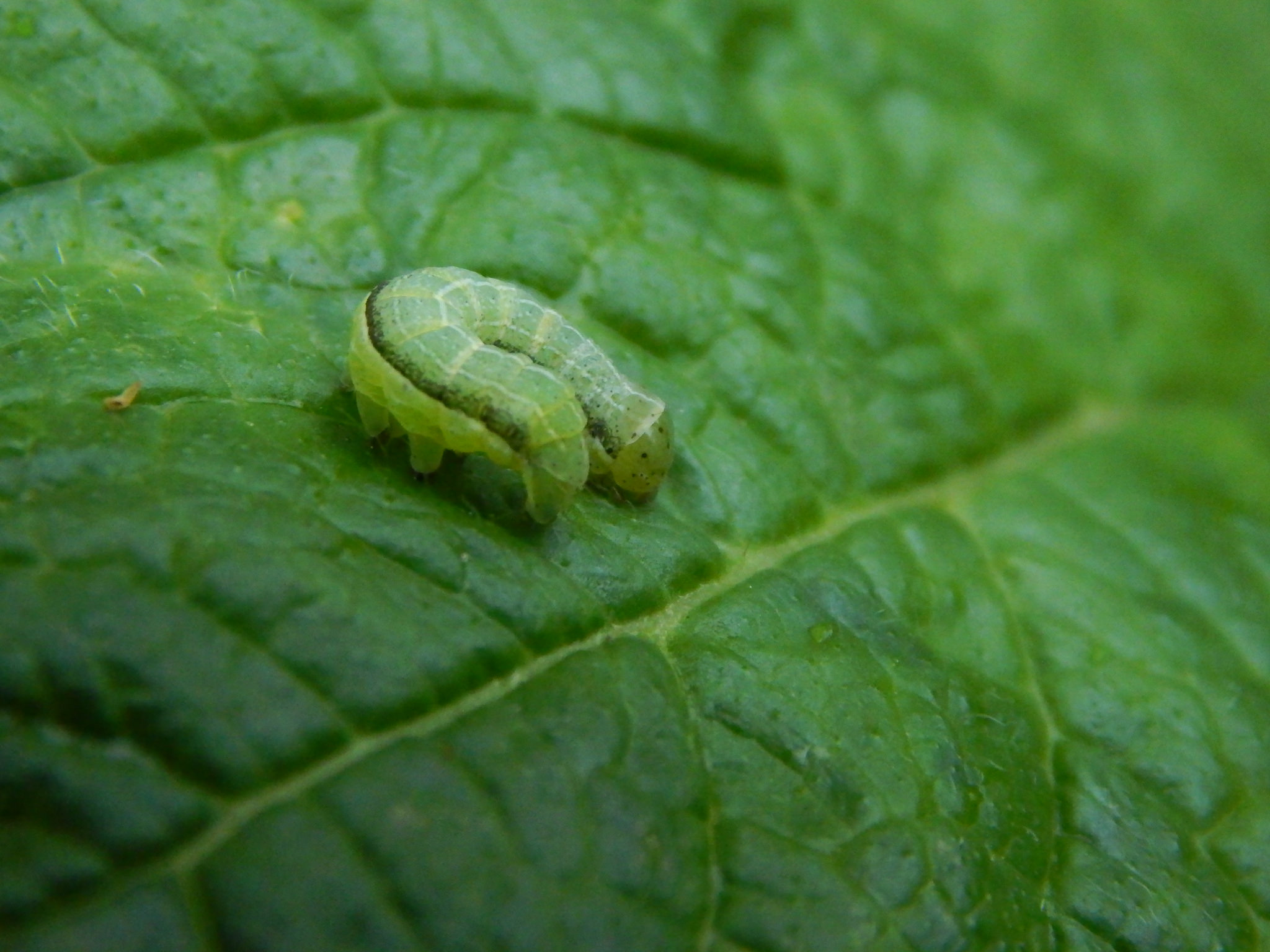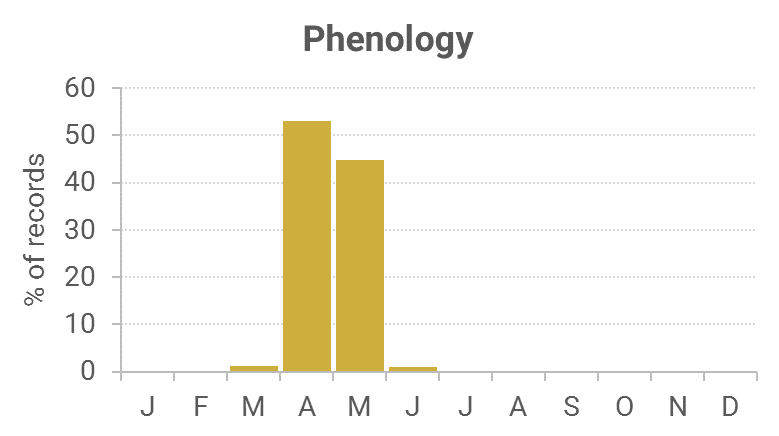Identification
The soft colour of the forewing that is powdered with black speckling, the rather large oval and kidney-mark, with a curved row of fine dots adjacent and a pale, dark-edged outer cross-line all combine to give it a distinctive look.
Recording Method.
Attracted to light, also comes to sugar and flowers.
Life cycle
One generation. Overwinters as a pupa in an underground cocoon, with the imago inside. Larvae are present May to July.
Larval foodplants
Blackthorn, Black Poplar, Bog-myrtle, Common Fleabane, Meadowsweet, Purple-loosestrife and willows.
Habitat
Mainly in marshes and bogs, but also damp woodland, gardens and coastal sites.
History
Lennon (1863) had stated that it was not common, but that it had occurred at Kirkconnell (VC73). Gordon (1913) had found it to be common on sallow on the moors around Corsemalzie, with the red form occurring fairly commonly. Earliest date being 5th April 1912.
Archibald Russell (1944) listed it as occurring near Gatehouse of Fleet (VC73) during the years 1942-43. Sir Arthur Duncan (1909-84) during his lifetime had found it at Closeburn, Lochar, Tynron and Castlehill, Dumfries (all VC72).
At Irvine House Lodge, Auchenrivock, a fine series were trapped in 1974. During 1975-89 there were forty records from all of the Rothamsted stations.
From 1982 to 2010 there were 130 records, mainly from the regularly trapped sites at Kirkton, Durisdeer and Carsfad at Dalry, with the rest from widely scattered sites across the region.

